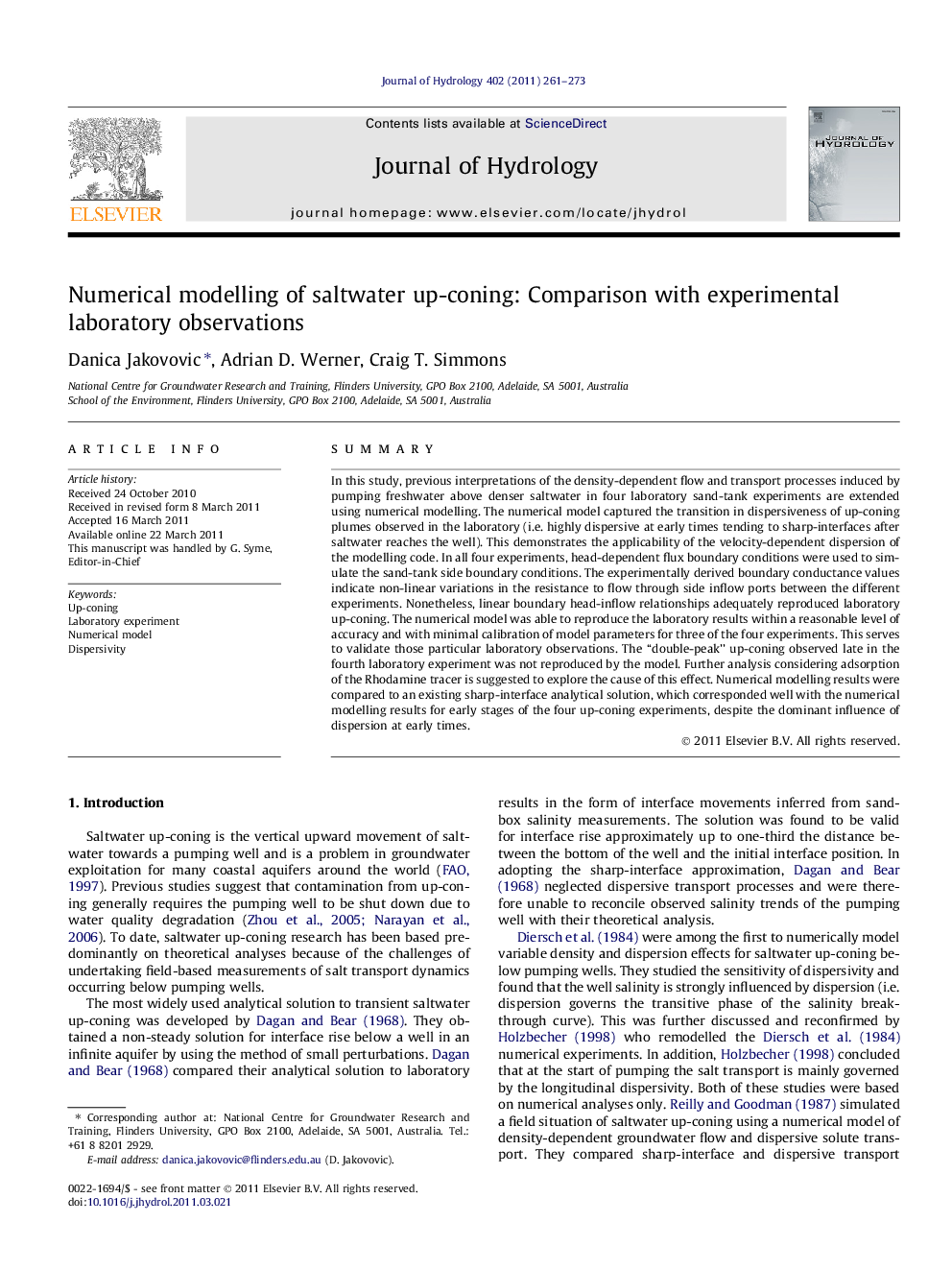| Article ID | Journal | Published Year | Pages | File Type |
|---|---|---|---|---|
| 4577527 | Journal of Hydrology | 2011 | 13 Pages |
SummaryIn this study, previous interpretations of the density-dependent flow and transport processes induced by pumping freshwater above denser saltwater in four laboratory sand-tank experiments are extended using numerical modelling. The numerical model captured the transition in dispersiveness of up-coning plumes observed in the laboratory (i.e. highly dispersive at early times tending to sharp-interfaces after saltwater reaches the well). This demonstrates the applicability of the velocity-dependent dispersion of the modelling code. In all four experiments, head-dependent flux boundary conditions were used to simulate the sand-tank side boundary conditions. The experimentally derived boundary conductance values indicate non-linear variations in the resistance to flow through side inflow ports between the different experiments. Nonetheless, linear boundary head-inflow relationships adequately reproduced laboratory up-coning. The numerical model was able to reproduce the laboratory results within a reasonable level of accuracy and with minimal calibration of model parameters for three of the four experiments. This serves to validate those particular laboratory observations. The “double-peak” up-coning observed late in the fourth laboratory experiment was not reproduced by the model. Further analysis considering adsorption of the Rhodamine tracer is suggested to explore the cause of this effect. Numerical modelling results were compared to an existing sharp-interface analytical solution, which corresponded well with the numerical modelling results for early stages of the four up-coning experiments, despite the dominant influence of dispersion at early times.
► Numerical modelling captured transition in dispersiveness of observed up-coning. ► General head boundary conditions were needed to simulate the sand-tank inflow ports. ► Late-time well salinities were primarily controlled by the plume width.
